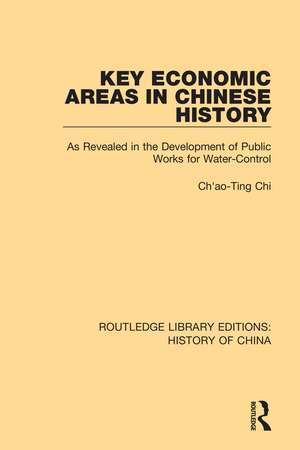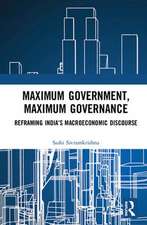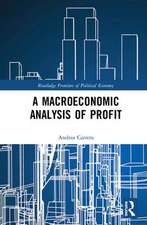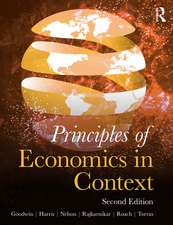Key Economic Areas in Chinese History: As Revealed in the Development of Public Works for Water-Control: Routledge Library Editions: History of China
Autor Ch'ao-Ting Chien Limba Engleză Paperback – 16 dec 2019
| Toate formatele și edițiile | Preț | Express |
|---|---|---|
| Paperback (1) | 216.07 lei 6-8 săpt. | |
| Taylor & Francis – 16 dec 2019 | 216.07 lei 6-8 săpt. | |
| Hardback (1) | 552.60 lei 6-8 săpt. | |
| Taylor & Francis – 10 sep 2018 | 552.60 lei 6-8 săpt. |
Preț: 216.07 lei
Preț vechi: 258.66 lei
-16% Nou
Puncte Express: 324
Preț estimativ în valută:
41.35€ • 42.84$ • 34.51£
41.35€ • 42.84$ • 34.51£
Carte tipărită la comandă
Livrare economică 22 martie-05 aprilie
Preluare comenzi: 021 569.72.76
Specificații
ISBN-13: 9781138316836
ISBN-10: 1138316830
Pagini: 206
Dimensiuni: 156 x 234 mm
Greutate: 0.45 kg
Ediția:1
Editura: Taylor & Francis
Colecția Routledge
Seria Routledge Library Editions: History of China
Locul publicării:Oxford, United Kingdom
ISBN-10: 1138316830
Pagini: 206
Dimensiuni: 156 x 234 mm
Greutate: 0.45 kg
Ediția:1
Editura: Taylor & Francis
Colecția Routledge
Seria Routledge Library Editions: History of China
Locul publicării:Oxford, United Kingdom
Cuprins
1. The Concept of Key Economic Area and its Relation to Public Works for Water-Control 2. Geographical Basis of Water-Control and Economic Regionalization in China 3. A Statistical Study of the Historical Development and Geographical Distribution of Water-Control Activities 4. Origin of Water-Control as an Economic Function of the Chinese State 5. The Loess Region and Central Huang Ho Basin as Key Economic Area 6. The Transition from the Huang Ho Basin to the Yangtze Valley 7. The Economic Domination of the Yangtze Valley
Notă biografică
Ch'ao-Ting Chi (1903–1963) was a Chinese economist and political activist. His book Key Economic Areas in Chinese History influenced the conceptualization of Chinese history in the West by emphasizing geographic and economic factors as the basis of dynastic power.
Descriere
This book, first published in 1936, offers the conception of the dynamics of the Key Economic Area as an aid to the understanding of Chinese economic history. By tracing their development, it shows the function of the Key Economic Area as an instrument of control of subordinate areas.


















